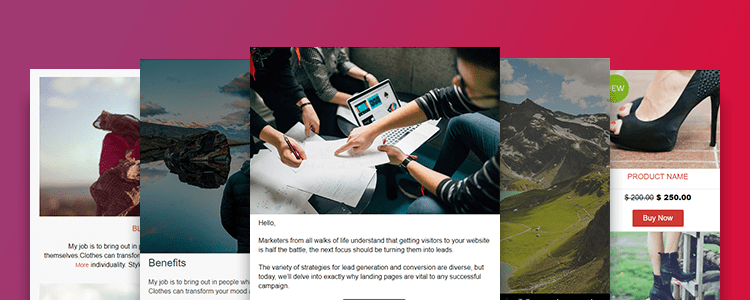Digital marketing strategies are ever-evolving to adapt to consumers’ rapidly advancing tastes and preferences. Email, as a form of communication, has been around since the late 70s! This begs the question, is email marketing still relevant?
Short answer: yes. To build an effective email marketing strategy is to connect with your target audience in a personal way. Email marketing platforms aid in giving businesses the power to reach customers–and potential customers–in a quick and easy way.
As you grow email subscribers, it’s important to remember that you are not just hoarding email addresses. You are growing a database of people that, in one way or another, care about your product. When someone opts-in, they’re letting you know that they might be interested in what you have to say!
Do not take this lightly, this is your chance to land in their inbox and add value to their day.
So, why exactly do you need an email marketing strategy?
Stay at the top of the customer’s mind
As we’ve covered, if someone opts-in to your emails, it’s because they’re interested in you. However, this doesn’t mean you’ve sealed the deal and earned their trust. The key here is to stay at the top of their mind with interesting and well-pointed emails.
However, it’s important to strike a balance here, as oversaturating a prospect with emails will lead to you losing subscribers.
Almost everyone has an email address
While it may be tempting to pour all your marketing efforts into your social media platforms (there are 2.7 billion active users on social media!), it’s important not to forget about the power of email. There are currently 4.9 billion email addresses.
Whether or not someone chooses to be on social media is one thing, but if you use the internet at all, there is a guarantee that you have an email address. Numbers don’t lie, it’s simply more effective to cast your net in the email sphere.
Engagement with emails is straightforward
Due to the fact that email has been around for so long, almost everyone knows how to interact with an email they receive. This takes the guesswork out of building an elaborate strategy to get prospects to do what you want them to do.
Users get a message, they reply or forward. Users see a button or link, they click it. Users receive an email they don’t want, they delete it or unsubscribe. The fact is, internet users already know how to engage with emails.
Email is a direct channel
While marketing is often about exploring multiple channels in which to connect with your audience, let’s not forget the value in having one, ultimate avenue where your whole audience is present– email! You can even allow for users to adjust their preferences as they opt-in.
In that right, it will also be useful to incorporate dynamic content into emails in order to customize the message (think: Hey, name!). Email is indeed a catch-all platform to reach your audience, but you want to give the impression that the emails are addressed to the individual.
In fact, research shows that email has a higher click-through rate (CTR) than social media. This is likely due to the reach and ability to customize the messages.
Harness powerful data
At its base, an email strategy is about fostering relationships with your subscribers/customers. Analytical data will provide you with the insights you need to determine what your subscribers engage with and what they don’t.
Having a good understanding of these insights is integral to making sure your email marketing is optimal. However, there is a risk that you gather insights without a clear direction, which will only lead to confusion. You can avoid this by building a clear email strategy.
Analytics are clear
All email marketing tools offer an analytics service, and rightfully so. Tracking delivery, open, bounce, click-throughs, and unsubscribes is central to tweaking your email marketing practices.
These metrics offer valuable insight into how your digital marketing campaign is going on the whole. Standard/optimal email marketing numbers are everywhere, but make sure you are taking into account your particular audience. For example: customers in your industry may expect a daily email, whereas customers in other industries may favor minimal contact.
Harbour trust within prospects
Having the trust of your potential customers is invaluable to a business. Part of building that trust means that you need to create tailored, personalized content that is clearly made for the recipient of your message.
Remember, your email lasts much longer than a post living on social media, so this is your chance to stand out. For example, a Facebook post has a lifespan of 2.5 hours– and you’re lucky if your tweet has a lifespan of 5 minutes!
To contrast this, emails never “die,” they stay in the user’s inbox until they take action. In this vein, segmentation will be very useful in building particular automations for your target.
Automation is key in developing drip campaigns and segments, which in turn will boost your CTR and overall conversions.
Email has been around for an incredibly long time. Chances are, it’s not going anywhere anytime soon. This means that taking the time to ramp up your subscriber list, and building a detailed email marketing strategy is a worthwhile investment in time and money.
Don’t forget to share this article


